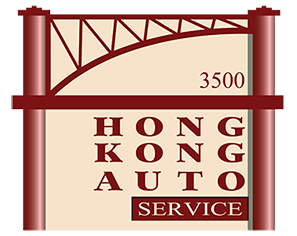Three Things Every Car Owner Must Understand about Oil Changes
Doing an oil change on your car used to be the simplest thing ever. Every 3,000 miles or so, you would drain the oil into a pan, add a new filter, and refill the motor with whatever type of oil your dad or mom told you was best. End of story.
Things are not that simple in today’s world. With some manufacturers stating that you only need to change the oil after 7,000, 10,000, or even 25,000 miles, it seems a  bit on the over-doing it side. Doesn’t it?
bit on the over-doing it side. Doesn’t it?
Let’s talk about engine oil and why that recommendation in your owner’s manual isn’t all that is seems.
What Does Normal and Severe Driving Conditions Mean?
One fact that the owner’s manual doesn’t mention is that those exceptionally long mileage recommendations are “normal” driving. But what exactly IS normal driving? In today’s environment, this type of description leaves a lot up in the air.
For some families, driving the kids about 5 miles round trip to school and to the store seems very normal. Did you know that those driving conditions are considered severe?
A commuter who drives 90 miles roundtrip, with nearly all of those being freeway miles, and then heavy use on the weekends with long trips to the beach or mountains sounds like some rough use of the motor. However, this is actually considered normal or ideal driving conditions.
For the layperson, terms like normal and severe can be very confusing.
In short, severe driving conditions would include:
- Trailer, boats, or other heavyweight towing
- Mainly driving on dusty, gravel, sandy, muddy, or salt-covered roads
- Mainly driving short trips of 10 miles or less
- Doing a lot of stop and go driving
- Driving long distances but at low speeds
- Making short trips of 20 miles or less in freezing temperatures
Nearly every mechanic and DIYer will have their own criteria. Yet, the examples above are considered by almost every mechanic to be “severe” driving conditions.
Why? To remove sludge from the motor, the engine needs to reach its full operating temperature and hold it there for at least 20 miles or so in normal outdoor temperatures. This is why long-distance freeway driving isn’t considered severe, but your short trip to the school is. Motors need to get warm enough and for a long enough period to burn off condensation as well. Short trips only add to condensation inside the motor.
Oil Life Monitoring Systems
Some newer car models have an oil life monitoring system, a computerized system for calculating when you should change the oil. A computer calculates not only your mileage but the operating conditions under which the motor has been run, such as outside temperature.
While the overall quality of the oil isn’t being measured, this calculation is based mainly on driving patterns. This means that if you drive many short trips to the school and grocery store, you will see the “Oil Change Needed” light come on the dash much sooner than if you drive lots of freeway miles at a higher rate of speed.
If you have one of these oil life monitoring systems on your vehicle, you don’t need to pay much attention to mileage. Only focus on the date. Cars that have not had an oil change within 6 months, regardless of mileage or length of trips, should have the oil changed.
So How Often Should You Change the Oil?
You can always stick to the manufacturer’s schedule in your owner’s manual, but since they really aren’t familiar with the area(s) you drive in or your driving habits, leave it to your trustworthy mechanics. The professionals at Hong Kong Auto Service will gladly help you to determine the proper oil change mileage for your vehicle and your driving habits.
You might find that, during the summer months when you tow your RV on weekends, Hong Kong Auto Service recommends that you change the oil more frequently. This type of information is something that no owner’s manual will be able to supply.
Does the Type of Oil I Use Matter? Isn’t Motor Oil All the Same?
It might seem like motor oil is all the same and it’s only the price that changes. Actually, there much more to engine oil than price.
First, read your owner’s manual to find the type and weight of the engine oil that they recommend for your vehicle. Usually, this will be numbers such as 10W-30, 20W-50, or something similar.
Most mechanic shops have their own supply of oil. You can ask them which name and weight of oil they will use in your vehicle. If you prefer to purchase a different brand, there are two simple steps for getting the right oil for your vehicle:
1. Find the weight of the oil your vehicle needs in the owner’s manual. Again, this will be a set of numbers such as 10W-30.
2. When you go to the auto parts store, look for an oil with the weight you need. Make sure it’s accompanied by a small starburst symbol and the letters “SL”.
The starburst symbol means that the oil has been tested and approved by the API (the American Petroleum Institute). The letters “SL” refers to a group of tests that include the oil’s ability to control deposits during high operating temperatures.
You can choose your preferred brand if they have the starburst symbol, the letters SL, and the correct weight.
What About Synthetic Oil?
Synthetic oils are common. While you can go longer between oil changes, the oil itself is far more expensive. If your vehicle has synthetic oil, you can replace it with regular oil. On the other hand, if the owner’s manual says that you must use synthetic oil to maintain your new car warranty, continue using it. Granted, if your vehicle isn’t within the new car warranty, you can use any type of oil that you wish.
If You Have An Older Model
If you like driving your car “until the wheels fall off”, you should speak to your mechanic about using an oil with a higher viscosity rating, such as 20W-50 or a straight 30W. On the occasion that you find you are adding more than a quart of oil between oil changes or you’ve noticed a loss of performance, it might be due to some engine wear. Using oil with higher viscosity might help you to recoup some of that loss of power.
Using oils that state “for high mileage engines” is another option for those whose vehicles are losing oil between changes. Many high mileage oils will help swell some of the internal seals slightly to prevent oil from leaking past them. Speak to your mechanic at Hong Kong Auto Service if your vehicle is experiencing issues such as these.
The Bottom Line
If your vehicle is still under the factory warranty, use the type of oil recommended. Always change it before the recommended mileage.
Once your vehicle is out of warranty, it’s a good idea to speak with one of the trusted mechanics at Hong Kong Auto Service. We will recommend the right mileage and type of oil for your driving needs.
If all the choices are still confusing, the professionals at Hong Kong Auto Service will be happy to answer all your questions, so you can make the right choice for your car or truck.
Hong Kong Auto Service is here for your oil change needs. Call us for an appointment today.
